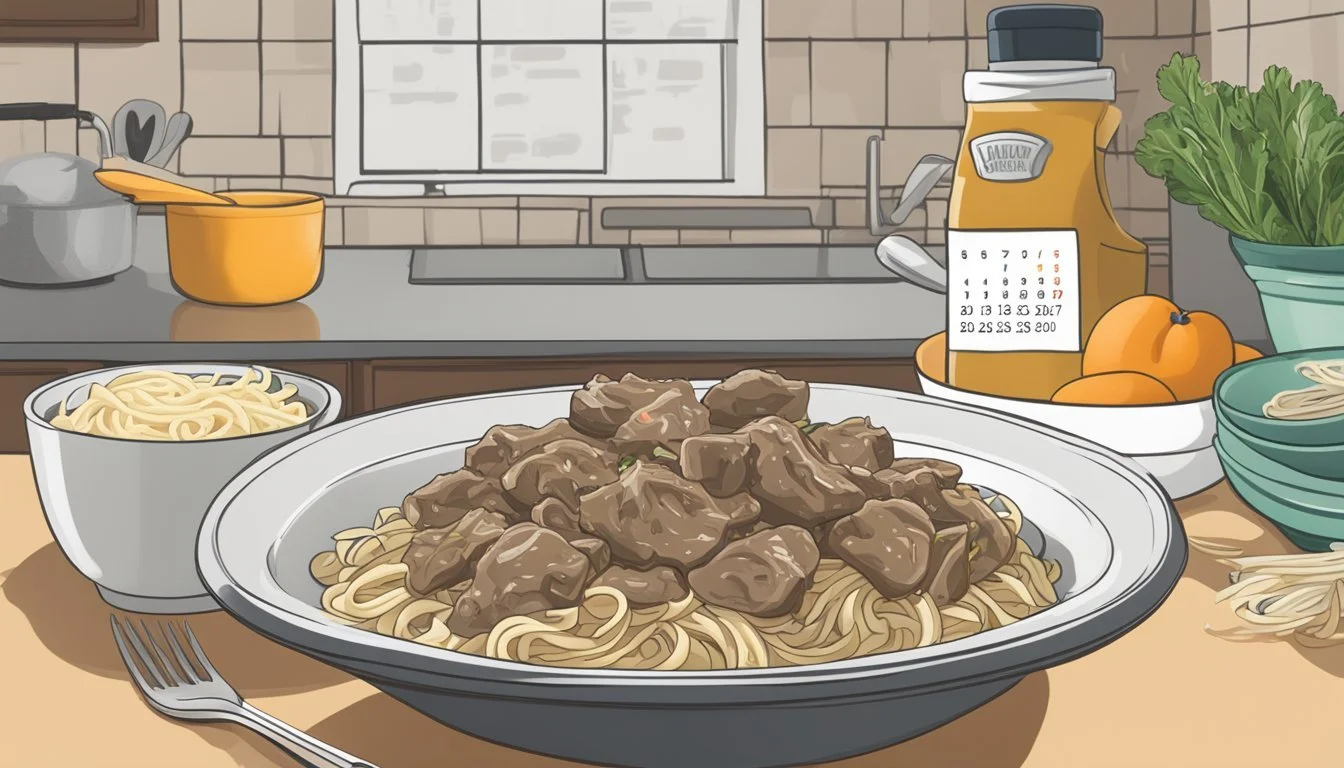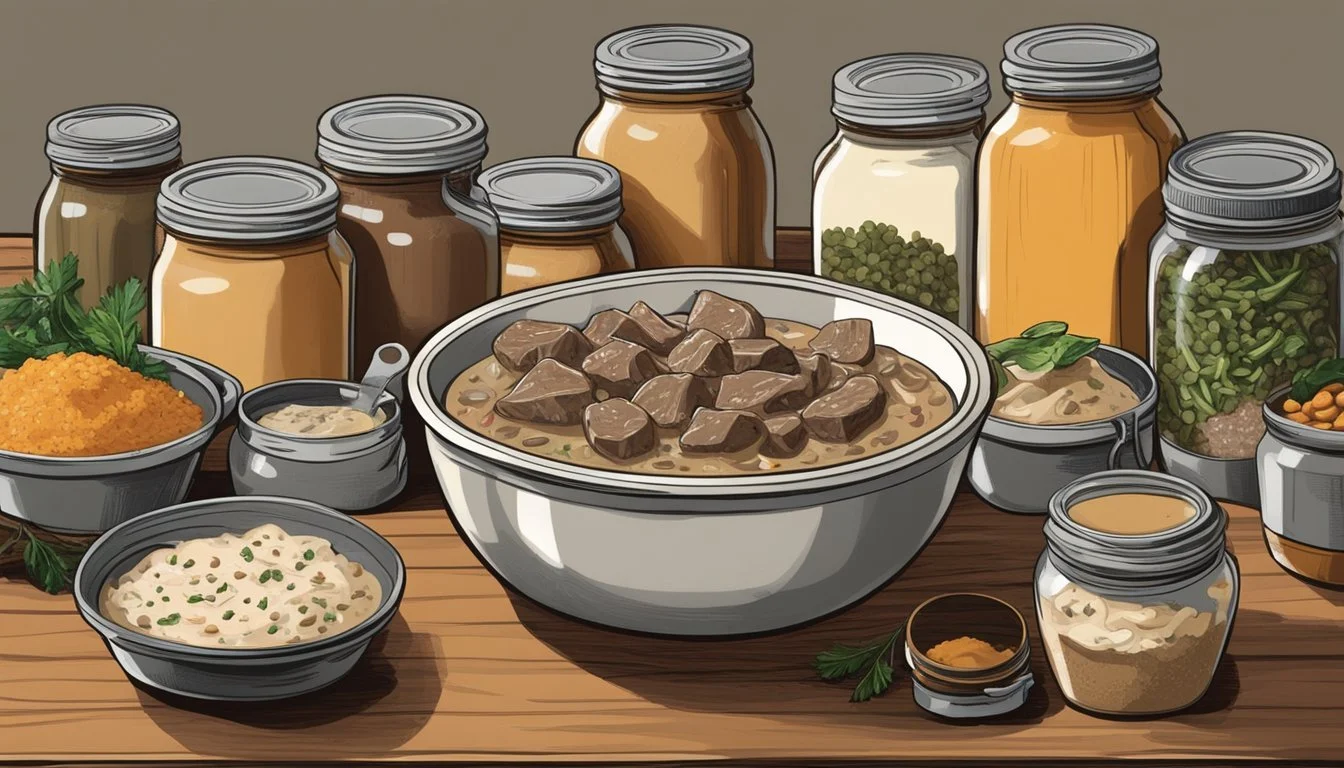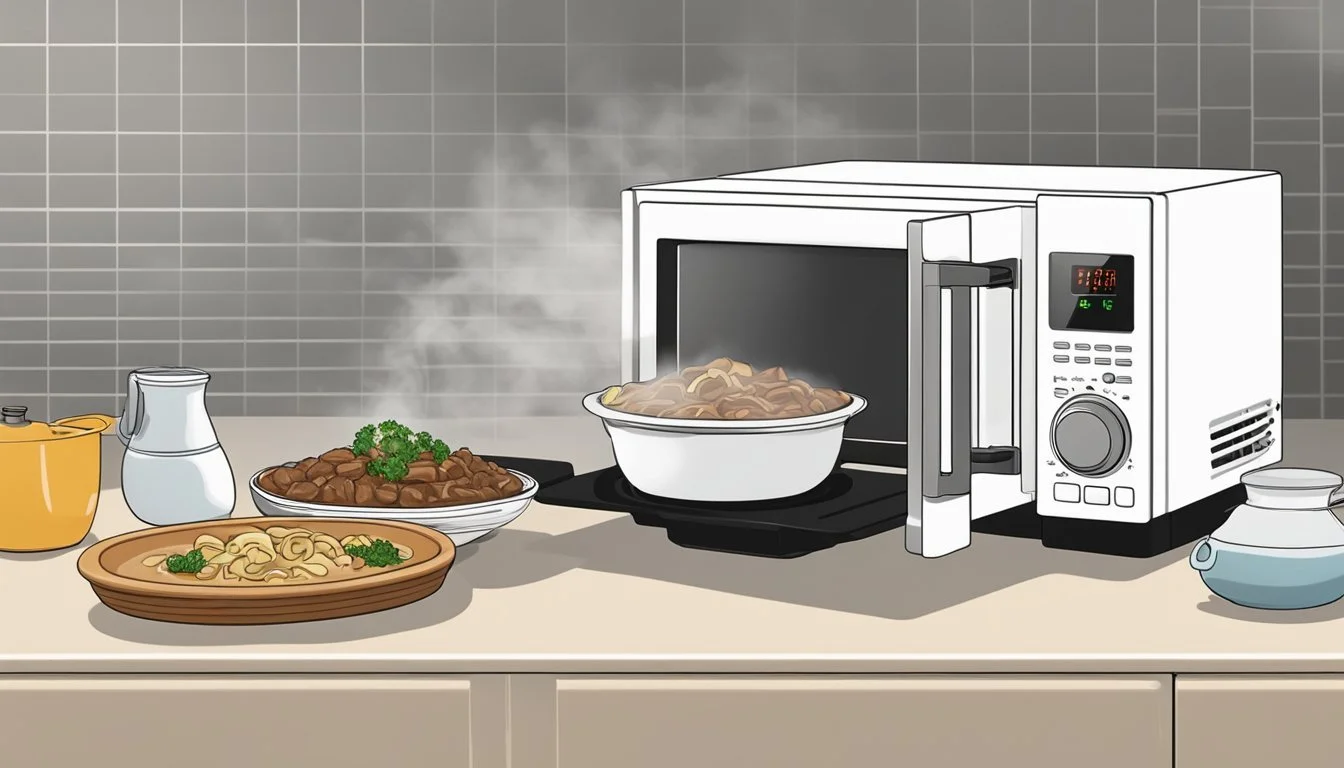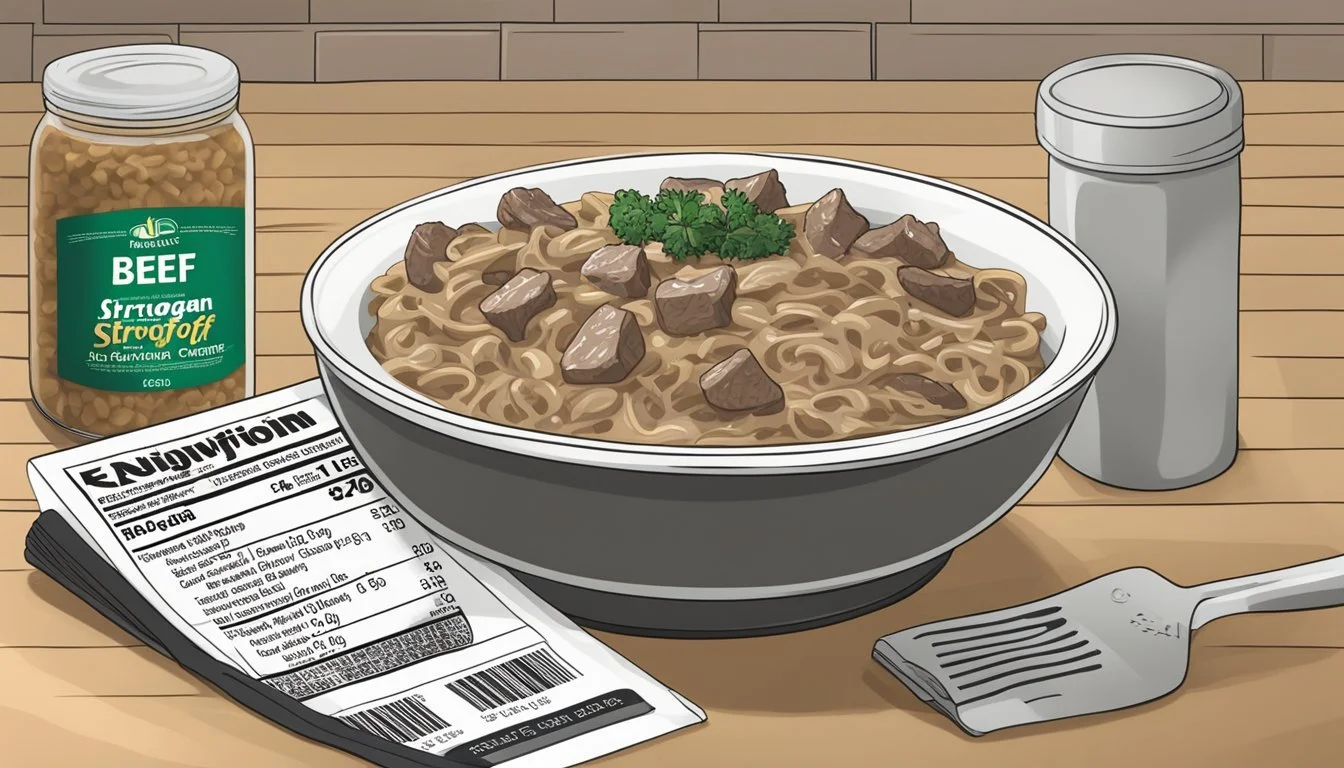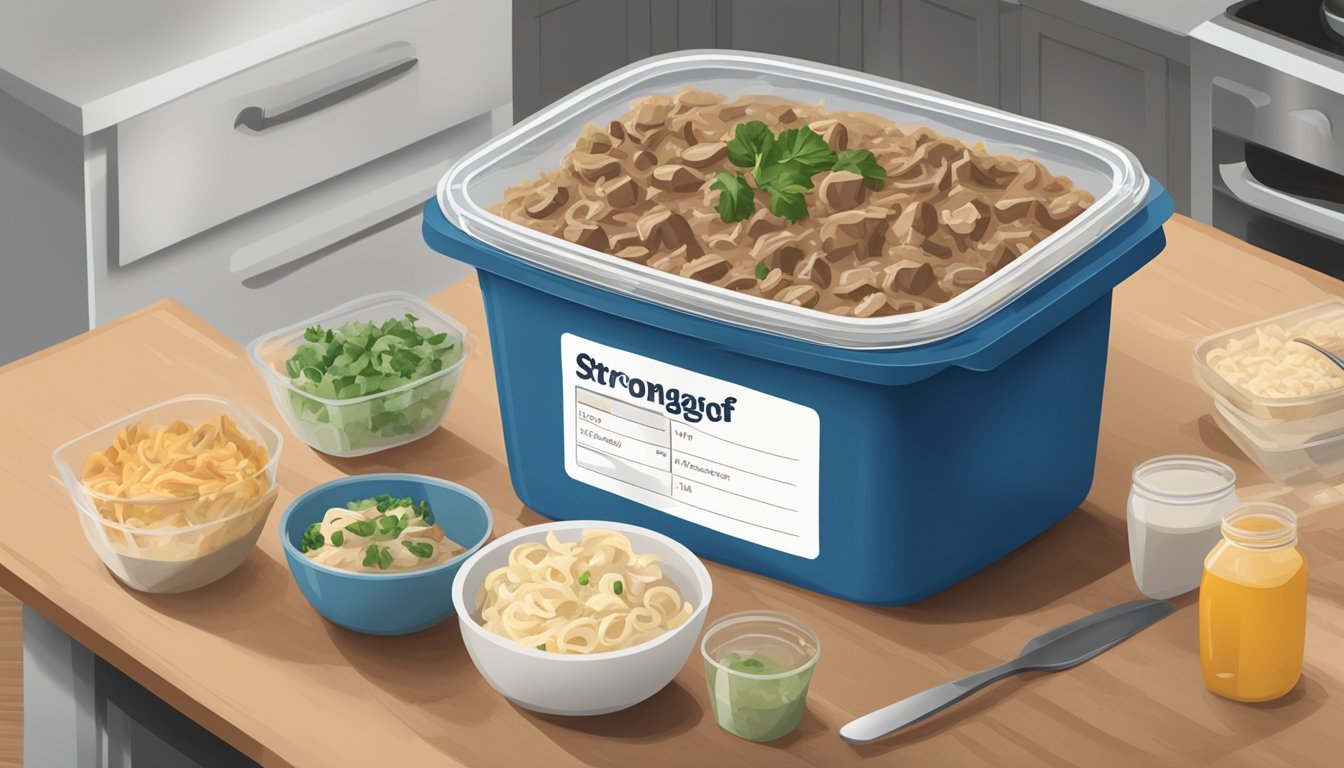How Long Do Beef Stroganoff Bowls Last?
Proper Storage and Shelf Life Explained
Beef stroganoff is a classic dish loved for its rich, creamy flavor and tender beef. For those wondering how long they can safely keep this delightful meal, the key lies in proper storage methods. Properly stored beef stroganoff can last in the refrigerator for 3-4 days.
Storing leftovers in airtight containers is crucial to maintaining the quality and safety of your beef stroganoff. Airtight containers help prevent the growth of harmful bacteria and keep the flavors intact. If you're thinking about long-term storage, freezing is an excellent option, extending the shelf life to around 2-3 months.
Knowing the shelf life of beef stroganoff is essential not just for enjoying great-tasting leftovers but also for ensuring food safety. By following the appropriate storage guidelines, you can savor every delicious bite without concerns about spoilage.
What Is Beef Stroganoff
Beef Stroganoff is a classic Russian dish that features tender pieces of beef served in a rich and creamy sauce. It is typically accompanied by noodles or rice, making it a comforting and hearty meal.
Key Ingredients
The essential components of Beef Stroganoff include beef, sauce, and sour cream. Beef, often cut into strips, serves as the main protein and is usually cooked until just browned. The sauce is a blend of several ingredients, such as mushrooms, onions, flour, beef broth, and Worcestershire sauce. Sour cream is added to the sauce towards the end of cooking to provide a creamy texture and a slightly tangy flavor.
Seasonings such as salt, pepper, and mustard are important for enhancing the flavors. Butter is often used to sauté the onions and mushrooms, giving the dish a rich, buttery undertone. The combination of these ingredients creates a deeply flavorful sauce that complements the beef.
Popular Variations
While the traditional recipe is beloved, there are several popular variations of Beef Stroganoff. One common variation includes the use of chicken or pork instead of beef. These alternatives still offer the same hearty and creamy characteristics but with a different protein base.
Vegetarians might enjoy a version that uses mushrooms as the main ingredient, providing a meaty texture and rich flavor. Some recipes call for the addition of different spices or herbs, such as paprika or dill, to create distinct flavor profiles.
For a lower-fat version, cooks may substitute Greek yogurt for sour cream. Some might prefer serving the dish over rice or potatoes instead of the traditional egg noodles, offering variations in texture and taste.
Safe Food Storage
Proper storage of beef stroganoff is essential to prevent spoilage, mold growth, and foodborne illnesses. Freshly prepared or leftover beef stroganoff should be stored in optimal conditions to maintain its quality and safety.
Refrigerator Storage
Refrigerating beef stroganoff promptly is crucial for safety. Freshly prepared beef stroganoff should be transferred to an airtight container and placed in the fridge within two hours of cooking. This practice minimizes exposure to air, which can introduce bacteria and promote bacterial growth.
Once stored in the refrigerator, beef stroganoff can last for 3-4 days. The cool temperature slows bacterial growth and helps preserve the freshness and flavor of the dish. It’s important to regularly check for signs of spoilage, such as unpleasant odors or mold growth, and discard any questionable portions.
Freezer Storage
Freezing extends the shelf life of beef stroganoff significantly. To freeze, allow the dish to cool completely before transferring it to a freezer-safe, airtight container. Removing excess air helps prevent freezer burn and preserves the meal’s quality.
Beef stroganoff can be kept frozen for 2-3 months. For better results, label the containers with the date of freezing. When ready to eat, it’s essential to thaw the stroganoff in the refrigerator overnight before reheating to prevent rapid bacterial growth. Reheat thoroughly to ensure food safety.
Proper storage techniques are vital for maintaining the quality and safety of beef stroganoff, whether stored in a refrigerator or freezer.
Determining Freshness
Ensuring the freshness of beef stroganoff bowls involves both a visual inspection and a smell test to identify any signs of spoilage. These methods help determine if the dish is safe to consume.
Visual Inspection
First, examine the beef stroganoff for any visible changes in appearance. Discoloration is a primary indicator of spoilage. Fresh beef stroganoff should have a consistent color, with no gray or green patches on the beef or mushrooms.
Texture is another clue. The beef should maintain its firmness, and the sauce should not separate or appear runny. Sour cream, if used, should be creamy without lumps. Look for mold on the surface, especially on toppings like sour cream or onions.
Rice or noodles in the dish should not be overly mushy, which could indicate spoilage. When inspecting, make sure the dish is evenly combined without unusual layered separations.
Smell Test
The odor can be telling. Fresh beef stroganoff should have a pleasant, savory smell. Any sour or off-putting odors suggest bacterial growth, which means the dish has likely spoiled.
Be particularly cautious of any pungent smells. Sour cream in the recipe, if spoiled, provides a distinctive sour odor not typical of fresh ingredients. The beef, if spoiled, may emit a rancid smell.
Always trust your sense of smell. If there's any doubt about the freshness based on odor, it is safer to discard the dish than risk foodborne illness. Conducting the smell test before consumption ensures you avoid potential health risks.
Shelf Life of Beef Stroganoff
Beef stroganoff can be stored both in the refrigerator and freezer, each with different storage lifespans and conditions. Proper storage is crucial to maintaining its quality and safety.
In The Fridge
Refrigerated beef stroganoff can last for up to 3-4 days when stored properly. To ensure maximum freshness, allow the dish to cool completely before transferring it to an airtight container. This cooling helps prevent bacterial growth.
When placing beef stroganoff in the fridge, keep it away from raw foods to avoid cross-contamination. Ingredients like onions in the dish can contribute to its overall shelf life, so consider their individual freshness. Consuming the stored food within the first few days is advisable to enjoy the best taste and texture.
When Frozen
Frozen beef stroganoff can be stored for up to 3 months. Freezing significantly extends the dish's shelf life while preserving its quality. Before freezing, allow the stroganoff to cool and then transfer it to a freezer-safe container or heavy-duty freezer bag.
Proper packaging is essential to avoid freezer burn and maintain the creamy texture of the sauce. Label the container with the date to keep track of its storage time. When ready to eat, thaw it in the refrigerator overnight. Reheating should be done thoroughly to an internal temperature of 165°F (74°C) to ensure food safety.
Proper Reheating Techniques
Reheating beef stroganoff correctly ensures it remains tasty, tender, and safe to eat. Using the stovetop or microwave are two effective methods, each with their own steps and precautions.
Stovetop Reheating
Stovetop reheating is an excellent way to keep beef stroganoff moist and evenly heated. Begin by placing the cold stroganoff in a saucepan or skillet. Add a few tablespoons of water, milk, cream, or beef stock to the pan to maintain moisture. This helps prevent the dish from drying out.
Set the stove to medium heat. As it warms up, stir occasionally to ensure even heating and to avoid cold spots. Continuously monitor the temperature, aiming for an internal temperature of 165°F (74°C) to ensure it's safe to eat.
Using a lid can help the dish heat more evenly and retain moisture. Once heated thoroughly, serve promptly.
Microwave Reheating
For convenience, the microwave offers a quick way to reheat beef stroganoff. Transfer the stroganoff to a microwave-safe dish. If the dish appears dry, add a small amount of water, milk, or broth to maintain the sauce's consistency.
Cover the dish with a microwave-safe lid or a damp paper towel to trap steam, preventing the stroganoff from drying out. Heat on medium power for 2-3 minutes, stopping to stir halfway through. This helps to distribute the heat evenly.
After heating, verify the internal temperature has reached 165°F (74°C) using a food thermometer. Adjust the heating time if needed. Always stir the dish again before serving to ensure an even distribution of heat.
Preventing Spoilage
Proper handling and cooking, along with effective airtight sealing, are critical to preventing spoilage and extending the lifespan of your beef stroganoff bowls.
Handling and Cooking
To ensure the longevity of beef stroganoff, it's important to start with fresh ingredients. Fresh beef, onions, and mushrooms should be carefully inspected for any signs of spoilage. Fresh beef should have a bright red color and no off-putting odor. Butter and oil should be used to sauté vegetables and sear meat, as they add flavor and help reduce bacterial growth.
When cooking, ensure the beef reaches an internal temperature of at least 160°F (71°C) to kill harmful bacteria. Use salt and black pepper not only for seasoning but also because they act as mild preservatives.
Bacteria thrive in the 40°F to 140°F (4°C to 60°C) range, so cool the dish quickly after cooking. Place the hot dish in shallow containers to speed up the cooling process to minimize the time it stays in the danger zone where bacteria can multiply rapidly.
Airtight Sealing
After cooking, store the beef stroganoff in an airtight container. This prevents air exposure, which can introduce bacteria and accelerate spoilage. Airtight containers are essential for keeping bacteria out and retaining moisture. Consider glass or high-quality plastic containers that seal tightly to prevent the entry of air and bacteria.
Containers should be clean and dry before use. Label them with the cooking date to keep track of storage time. Proper sealing also helps to maintain the flavor and texture of the dish, making it enjoyable for up to 3-4 days in the fridge. Always inspect the dish before reheating; check for discoloration, mold, or unpleasant odor which are signs of spoilage.
Health and Nutrition Facts
Beef Stroganoff bowls provide a hearty meal that combines significant amounts of protein and fats. These bowls can be high in calories, making them a substantial choice for those who need energy, but they also come with dietary considerations such as saturated fat and cholesterol content.
Calories and Macronutrients
A typical serving of Beef Stroganoff contains 391 calories. This makes it a relatively high-calorie meal suitable for individuals with higher energy requirements.
In terms of macronutrients, the breakdown is as follows:
Total Fat: 23g (29% of Daily Value)
Saturated Fat: 11g (55% of Daily Value)
Trans Fat: 0.5g
Polyunsaturated Fat: 1.2g
Monounsaturated Fat: 7.5g
Cholesterol: Present in moderate amounts, which should be accounted for in heart-healthy diets.
Protein: Sufficient to support muscle repair and growth.
Each bowl balances proteins and fats, essential for fullness and energy.
Dietary Considerations
Beef Stroganoff can contribute significantly to daily fat intake, especially saturated fat, which accounts for more than half of the daily recommended value per serving. These high levels could impact those monitoring their cholesterol levels.
On the carbohydrate front, Beef Stroganoff includes moderate amounts:
The fiber content is typically low, so pairing with a fiber-rich side might be beneficial.
For special diets:
Those on low-fat or low-cholesterol diets may need to consume Beef Stroganoff in moderation.
Alternatively, modifications like using leaner beef cuts or low-fat dairy products can make it more suitable for heart-conscious individuals.
Note: Consider individual dietary needs and health conditions when choosing Beef Stroganoff as a meal option.
Additional Tips for Longevity
To keep beef stroganoff bowls fresh for as long as possible, focus on proper portioning and optimizing container use. These practices help maintain quality and extend the shelf life of your dish.
Proper Portioning
Portioning meals into smaller servings can help keep beef stroganoff fresh longer. Divide the dish into individual meal sizes before storing it. This minimizes the number of times you need to open the container, reducing exposure to air and bacteria.
Date each portion to keep track of freshness. A clear label with the preparation date helps you consume older servings first, ensuring none go to waste.
Using an air-tight container for each portion is crucial. It prevents moisture from entering and maintains the dish’s quality.
Optimizing Container Use
Proper container use can significantly impact the longevity of beef stroganoff. Choose containers that are specifically designed for food storage, such as BPA-free plastics or glass containers with secure, airtight lids.
Use the right size container to avoid leaving too much air space, which can lead to faster spoilage. The less air in the container, the slower the oxidation process.
Alternatively, vacuum-sealing can be a highly effective method. Removing all the air from the packaging further slows down bacterial growth, preserving the beef stroganoff for a longer period.




